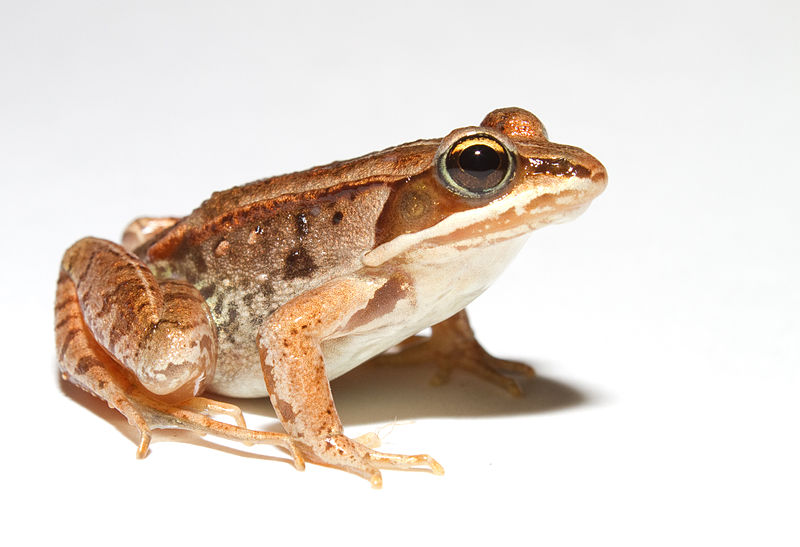We're open daily! View holiday hours
Science News
Frogsicles
August 26, 2013
by Molly Michelson

“…They are essentially solid frogsicles.” That’s Stefan Sirucek in National Geographic describing the latest publication on frozen frogs. Sounds like the Triplets of Belleville (click for image), n’est-ce pas?
Jon Costanzo and his Miami University (Ohio, that is, not Florida) colleagues studied the antifreeze mechanics of Alaskan wood frogs (Rana sylvatica) that allow the amphibians to survive temperatures down to minus 16 degrees Celsius. The team collected several dozen specimens and reproduced the frogs’ frozen winter conditions in their lab in Ohio.
“We kind of faked them out as if they were being subjected to decreasing temperature and decreasing daylight like they would experience in the field,” Costanzo explains.
Costanzo, somewhat of an animal winter-stress expert, had a “completely unexpected” finding with the Alaskan frogs. They broke down muscle protein, which is surprising because they would have to breed soon after emerging from hibernation.
The team believes that the frogs are using nitrogen in the protein to produce urea. Although humans and other creatures also produce urea, a waste byproduct, they quickly release it from their bodies. The frogs don’t.
“Rather than urinating to get rid of the urea, they’re hanging onto it and they really stacked it up,” Costanzo says. “The concentration of urea in their blood was just huge and way more than we’d ever seen in the frogs from Ohio. We’ve never seen the accumulation like we’ve seen in these Alaskan frogs. It’s really spectacular.”
Urea, a cryoprotectant, can help tissues survive freezing stresses and also stabilize membranes. It also helps depress metabolism while the frogs hibernate for nearly eight months.
The research also found the frogs produce glucose, which is ordinary blood sugar, as they’re freezing and accumulate that to high levels, too, which appears to help the cells tolerate freezing.
Another key: dehydration.
“We don’t know exactly how they are dehydrating their organs during freezing but we know the organs shrink,” Costanzo said. “The idea is that rather than have all that water remain in the organ and freeze and become big chunks of ice, have that water freeze outside where it’s not going to harm the tissue structure.”
See? Frogsicles! And it’s not just a frozen treat. Costanzo and his colleagues hope that understanding the Alaskan frogs’ antifreeze system might have implications for human organ transplants. Très bien!
The research was published last week in the Journal of Experimental Biology.
Image: Brian Gratwicke/Wikipedia